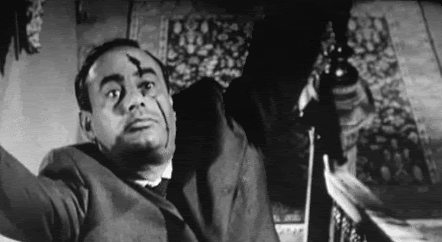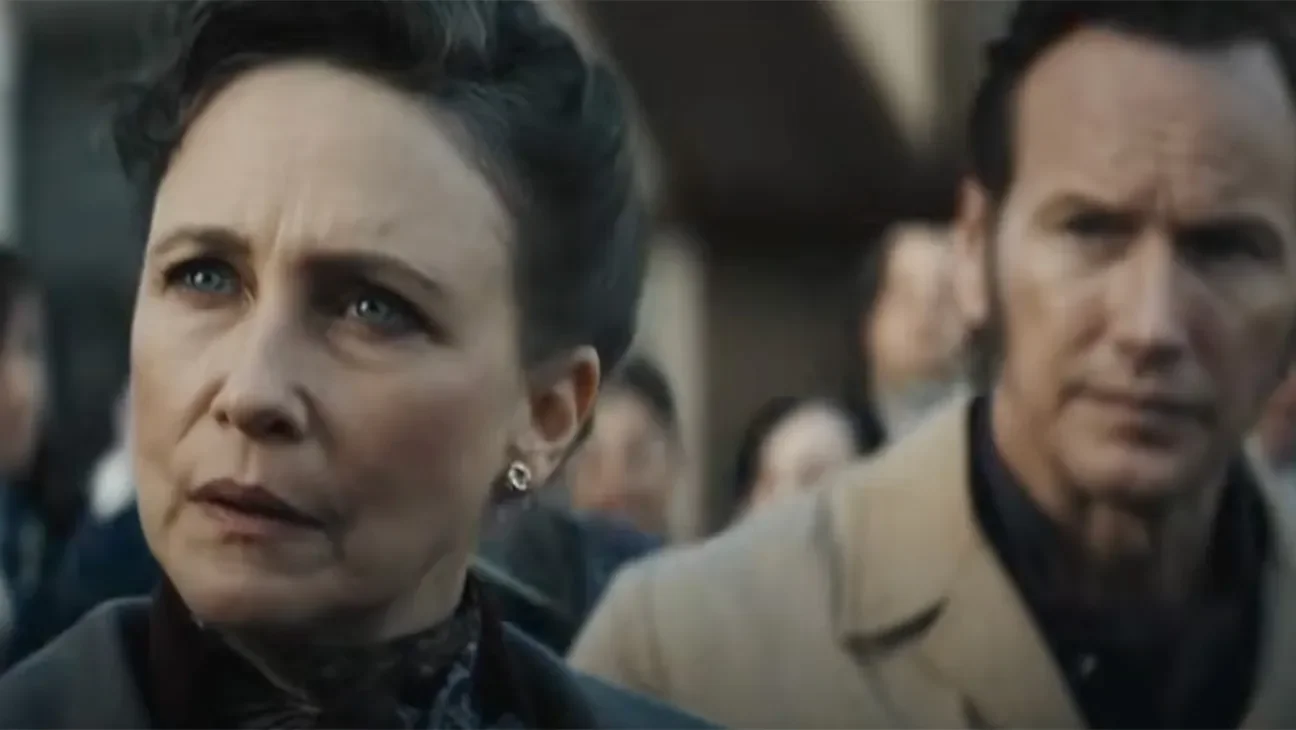Gender and Sexuality in Hitchcock's Psycho (1960)
Even if you have never watched the film, Psycho you are probably familiar with the film’s musical score, or that iconic crrr crrr crrr prominently featured in THE bathroom scene. Starring Anthony Perkins as Norman Bates and Janet Leigh as Marion Crane not only is Alfred Hitchcock’s 1960 film Psycho a cornerstone of psychological horror, but it also has a profound commentary on the standards of gender and sexuality in this era.
In fact, we can examine the gender and sexuality elements of this movie to look at the broader way that horror tackles it all together. The film offers a sophisticated examination of these subjects with its innovative narrative and visual aesthetic, especially through its contentious characters and iconic situations. It is also a great introduction to genre film if you would like to start writing horror.
Let’s dive into how gender and sexuality are dealt with in Psycho:
The Complexity of Gender Roles in Psycho
While we will, of course, dive into the film’s more memorable, and deadly, scenes, I think time should spent on the gender ambiguity and identity that is presented in the movie. We have two powerful characters – Norman Bates and Marion Crane who, compared to the 1960s, challenged the conventional gender roles that were the standard in the 20th century, especially in cinema. Men were the smoking detective hero type in thrillers while women were the damsels that needed saving.
However, Psycho through three elements of the characters:
Marion Crane, The Thief
While she is a type of damsel, and she most definitely is in distress, (I don’t know if you need a spoiler warning for an over sixty-year-old warning), her death itself is memorable not only in its off-screen violence, but because she does not get saved at all. We would argue whether this should be seen as a “punishment” for her rejection of societal gender norms, but I think that is missing sight of how she eschews those norms in the first place.
The film’s central conflict is made possible by the $40,000 theft. For today that would be almost half a million so it certainly shows her degree of agency in what should be a passive existence as a man’s accessory.
Again, whether this determination and self-reliance leads to the consequence of death, I think it is more fascinating that this character acted as a good foil against Norman’s gender fluidity.
Norman Bates, The Momma’s Boy
On the opposite end of the spectrum, we have Norman Bates. While the film doesn’t outright say that Norman is gender fluid, gay, or any variation thereof, he does embody a type of gender fluidity. While this comes into play later with the reveal of his dressing as his mother, there is something deeper in his gender representation.
Take, for example, the conversion below:
Norman Bates: Where are you going?
[Marion looks uncomfortable]
Norman Bates: I didn't mean to pry.
Marion Crane: I'm looking for a private island.
Norman Bates: What are you running away from?
Marion Crane: Why do you ask that?
Norman Bates: People never really run away from anything. The rain didn't last long. You know what I think? I think that we're all in our private traps, clamped in them, and none of us can ever get out. We scratch and we claw, but only at the air, only at each other, and for all of it, we never budge an inch.
Marion Crane: Sometimes we deliberately step into those traps.
Norman Bates: I was born in mine. I don't mind it anymore.
Marion Crane: Oh, but you should. You should mind it.
Norman Bates: Oh, I do...
[laughs]
Norman Bates: But I say I don't.
Marion Crane: You know... if anyone ever talked to me the way I heard... the way she spoke to you...
Norman Bates: Sometimes... when she talks to me like that... I feel I'd like to go up there... and curse her... and-and-and leave her forever! Or at least defy her! But I know I can't. She's ill.
This conversion alludes to a deeper self that Norman does not show. Yes, it is psychopathy, but one also must wonder if this is also a commentary on the sexuality aspect that is kept hidden.
Transition of the Masculine to the Feminine
Norman’s metamorphosis into his mother touches on many aspects of the masculine and feminine duality. The mother figure’s violence counters Norman’s passiveness – again subverting the idea of a passive female and an aggressive male.
One could even see this as a symbolic fusion between both gender identities, which further complicates the dual nature of Norman, as both the caregiver and psychotic killer.
Hitchcock explores these themes of identity and repression through these character arcs. Deep-seated tensions over identity, independence, and social conventions are reflected in the acts of Marion and Norman. Their brief exchanges explore themes of personal and gender identity confinement as well as control and self-identification, as seen by Norman's discussion of his unwillingness to leave his mother and the hotel.
Sexual Deviancy in Psycho
While gender is explored through a clear black-and-white lens, the sexual deviancy apparent in the film is a much more nuanced foray.
For example:
The Taboo of Sexuality
We see inklings of sexuality being seen as taboo.
The 1960s social conventions around sexuality are challenged by Marion's earliest mention of her choice to live in the same room as her partner without being married. Again, I believe these continued actions, of her rejecting societal expectations, can be seen as narrative punishment.
In a similar vein, we can also see that with Norman’s borderline Oedipal obsession with his mother. “A boy’s best friend is his mother,” is something that takes Marion aback, because this is not considered “normal” and it underscores Norman’s stunted emotional and sexual development.
Voyeurism and Sexuality
Psycho is not the first time Hitchcock played around with voyeurism. For example, the primary plot of 1954’s Rear Window sees Jeff played by James Stewart) spying on his neighbor. However, Psycho places a sexual element.
What is interesting is that the audience becomes a voyeur, observing both characters in various moments of intimacy and violence. This is clearest when Norman spies on Marion undressing, but in a way that the audience is also complacent in this voyeuristic act. It is almost as if Hitchcock holds the lens to humanity’s dark impulses.
The Shower Scene
By today’s standards, this shooting and choice of lighting often gets lampooned. For instance, the dark silhouette of the silent killer, the bouncing light, and the over-the-top sound work can all be seen as gimmicky by some, however, I still believe this is a phenomenal piece of cinema that worked expertly within the limitations of its time.
Beyond its obvious horror, the notorious shower scene is a graphic depiction of gendered abuse. Marion is targeted because Norman, as a sexual predator, targets the female form. The boundaries between the genders of the attacker and victim are blurred when Marion, in her most vulnerable state, is attacked by what looks to be a female figure. This scenario explores the dynamics of power, vulnerability, and violation as it digs into the psychosexual conflicts at play.
The Psycho Novel and Ed Gein
It is worth noting that Hitchcock's adaptation of Robert Bloch's book intensifies the sexual and psychological overtones, giving the story a deeper examination of the motivations and dysfunctions of its protagonists.
However, it is equally important to explore that the novel’s inspiration comes from the real-world atrocities committed by serial killer Ed Gein. I’ll not delve into the salaciousness of the case, but I mention it because this helps one understand the further gender and sexuality complexities of what both Block and Hitchcock wanted to explore.
Final Thoughts About Sexuality in Psycho
Alfred Hitchcock's Psycho delves deeply into the ways that gender, sexuality, and identity are intertwined within a story that can still be seen as suspenseful and shocking. Examining the film's ability to interact with and challenge 1960s social conventions provides a rich canvas on which to explore more general concerns of human psychology and social expectations.
By all accounts, Psycho remains a critical piece of cinema, both for its writing and technical execution. I believe the themes of sexuality and gender are a large part of what makes the film so iconic as it forces us to question our norms and confront our shadows.
















Explore the top Stephen King film adaptations, from Carrie to The Long Walk, and how each redefines horror, humanity, and fear.